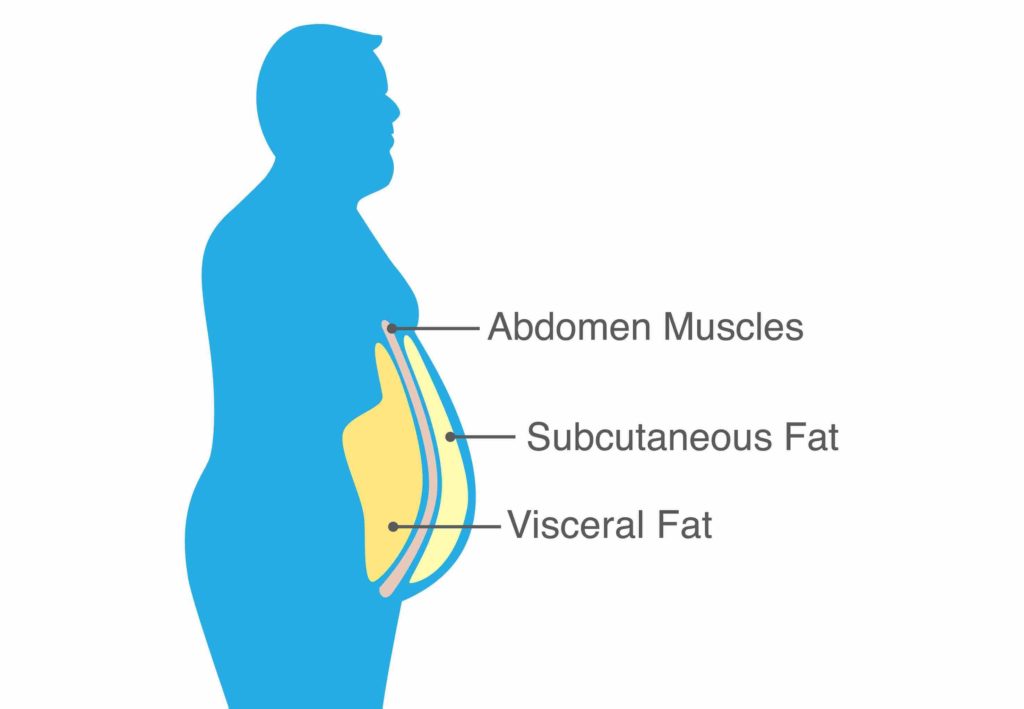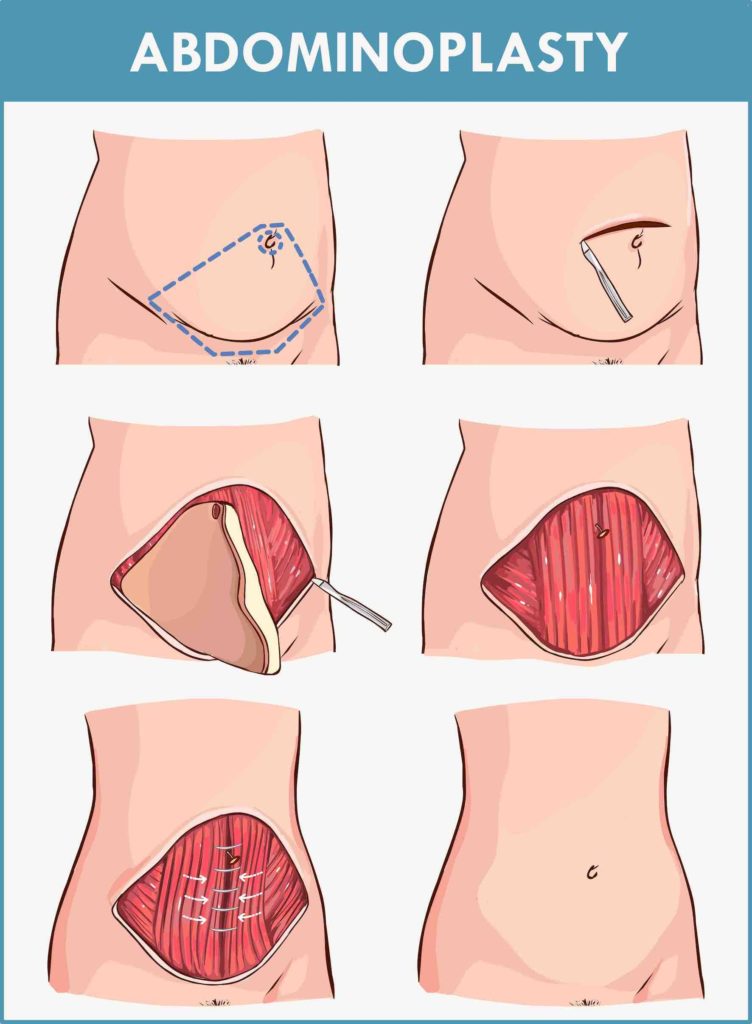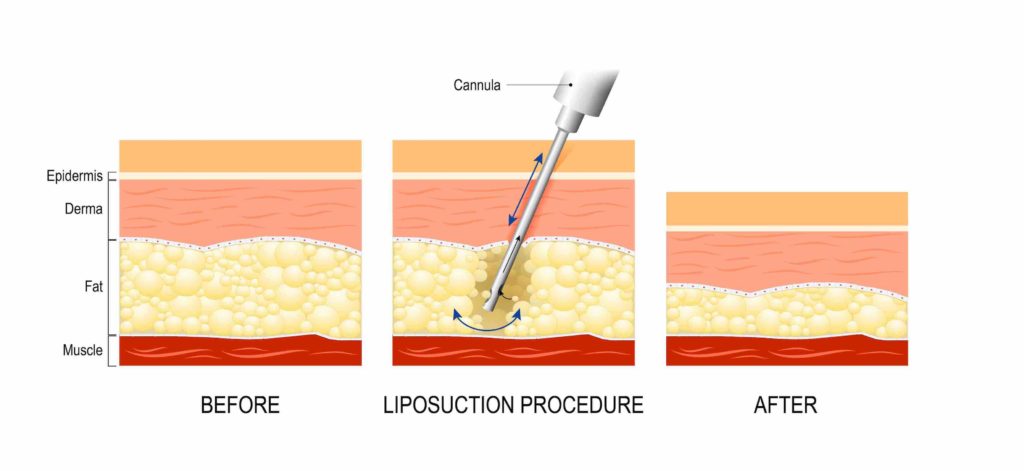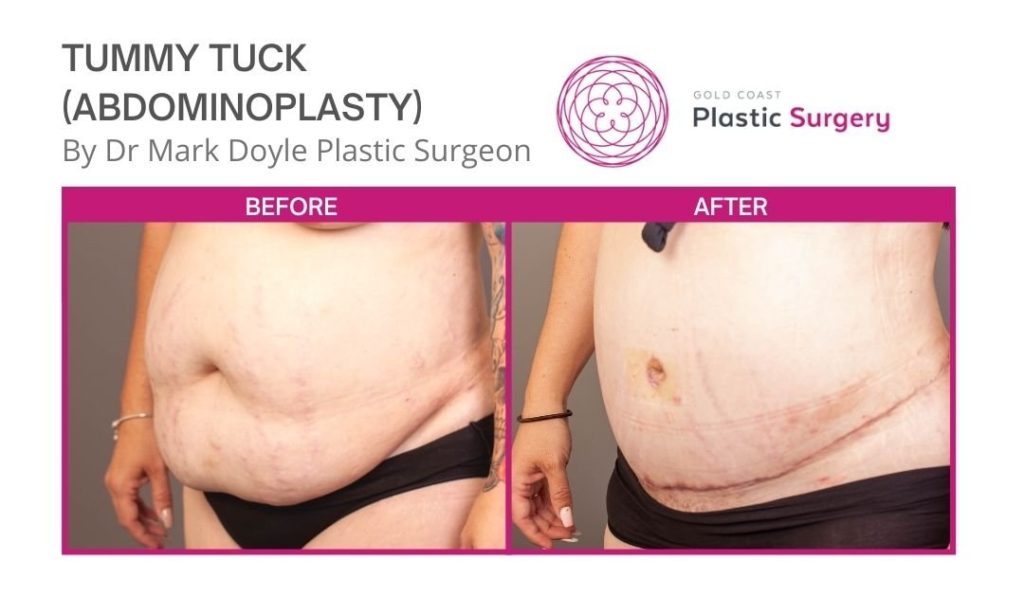Key Takeaways
- There are two types of stomach fat: visceral and subcutaneous, which affect candidacy for plastic surgery.
- Subcutaneous fat can be removed through procedures like tummy tuck (Abdominoplasty) and liposuction, while visceral fat cannot be safely removed.
- Visceral fat surrounds organs and increases health risks, making it dangerous to attempt removal through plastic surgery.
- Patients with excess visceral fat should focus on a healthy lifestyle for fat reduction rather than relying on surgery.
- To optimize results from plastic surgery, patients should be close to their ideal weight and maintain stable weight post-surgery.
When it comes to losing weight, most people think that plastic surgery is an easy fix. But plastic surgery isn’t for everyone. There’s an important factor to consider: the type of stomach fat you have on your body. There are two types of stomach fat, visceral and subcutaneous.
The primary type of fat you have will determine your candidacy for plastic surgery procedures. This article will explore each type of abdominal fat and the implications it has for plastic surgery.
Tummy tuck (Abdominoplasty) and Liposuction both help to remove excess fat from the stomach. But certain types of stomach fat cannot be safely removed. This is important for plastic surgery. Why? Because removing large amounts of ‘internal’ fat can be dangerous if attempted.
Types of Stomach Fat

There are two types of stomach fat: Visceral and subcutaneous. Visceral stomach fat is the type of fat that surrounds your organs and increases your risk for health problems. Subcutaneous stomach fat is the type that sits under your skin and may give you an abdominal pouch.
You must understand the difference between these types of fat to know whether plastic surgery will be of benefit to you.
So, what is the difference?
Subcutaneous Stomach Fat
Subcutaneous fat sits underneath your skin. This is the fat you can grab or pinch, and is often what makes up a stomach apron or love handles. If your stomach has more subcutaneous fat than visceral fat, you will find it soft and squishy.
Subcutaneous stomach fat is not considered as dangerous to your health as visceral stomach fat. In fact, some subcutaneous stomach fat can actually be beneficial for you. This type of fat helps to insulate your organs and provides a cushion around them.
However, too much subcutaneous body fat can be unhealthy. This type of stomach fat can be removed with certain plastic surgery procedures, such as a tummy tuck (Abdominoplasty) or liposuction.
Visceral Stomach Fat
Visceral fat surrounds your organs and increases your risk for health problems. The type of fat is often referred to as “hidden” or “internal” stomach fat. Usually, if you have a majority of visceral fat, this presents as a hard and protruding stomach as well as a large waist.
Some visceral stomach fat is necessary for cushioning and insulating your organs. But too much of it can be dangerous for your health. This correlates with an increased risk for chronic health conditions (such as heart disease, cardiovascular disease, stroke and diabetes).
Visceral stomach fat is not something that can or should be removed with plastic surgery. In fact, trying to remove this type of fat with liposuction or a tummy tuck can be extremely dangerous.
Removing ‘Internal’ Visceral Fat with Abdominoplasty Surgery
It’s not possible to remove visceral stomach fat with tummy tuck surgery (Abdominoplasty). This is because an Abdominoplasty targets only the fat that is on or above the abdominal muscles.

If a surgeon attempts to target visceral fat, the abdominal organs are at risk. This also applies to liposuction. It’s not possible to target visceral stomach fat with liposuction because the cannula (the surgical instrument used during liposuction) can only go so far without puncturing or damaging the organs. See below:

So, if you’re considering surgery, be sure to ask your surgeon about the type of stomach fat they are targeting.
Can a Patient with a Majority of Visceral Stomach Fat Still Get Plastic Surgery?
“I still perform surgery on patients with large amounts of visceral fat, only if their main concern is loose skin. This skin can be removed, but the procedure will not change the size of their stomach and waist,” says Dr Doyle.
Patients with excess visceral fat often have difficulties with their healing after surgery. This complicates recovery and can be uncomfortable for the patient.
This is why it’s always recommended that you are as close as possible to your ideal weight for surgery.
Visceral Fat and Tummy Tuck (Abdominoplasty) Results
Abdominoplasty surgery is not a final solution for patients with excess visceral fat. The surgery only helps to reduce the appearance of stomach fat (and excess skin) that is above the abdominal muscles.
“I often tell patients that a Abdominoplasty will give them a ‘flatter’ stomach but not a ‘smaller’ stomach. This is because we can only remove skin and subcutaneous fat.”
– Dr Doyle, Specialist Plastic Surgeon
The following before and after images show Tummy Tuck results (Abdominoplasty) on a patient with a large majority of visceral fat. As you can see, the surgery reduced the amount of excess skin on her stomach, but not the size of her waist.

How to Reduce Visceral Fat
The best way to remove visceral fat is through a healthy diet and physical activity or bariatric surgery.
“I always tell my patients that the best way to reduce visceral stomach fat is through a healthy lifestyle. Eating a healthy diet and getting regular exercise will help to reduce your waist and reduce your risk for chronic disease,” says Dr Doyle.
If you are considering surgery to remove stomach fat, be sure to consult with a specialist plastic surgeon, and always get a second opinion.
How to Improve Your Results from Abdominoplasty or Liposuction
The best way to increase your odds of good results from plastic surgery is to be as close to your ideal weight as possible. Abdominoplasty and liposuction are not weight-loss solutions. Rather, they are body procedures for excess skin.
If you’re considering either of these procedures, it’s recommended that you are within 5kg of your ideal body weight (which is based on your BMI). You should also be able to maintain a steady weight.
If your weight is unstable and fluctuates, you’ll likely compromise the results of your surgery. Maintaining your weight after surgery is as important as being close to your ideal weight before surgery.
FAQs: Excess Stomach Fat and Plastic Surgery
What does subcutaneous fat look like?
Subcutaneous fat is the type of stomach fat that lies beneath the skin. You can pinch this fat with your fingers. Usually, it looks like an abdominal pouch or stomach overhang.
What does visceral fat look like?
Visceral stomach fat is the type of stomach fat that surrounds the organs and abdominal cavity. You cannot pinch this fat with your fingers. Usually, it looks like a hard and protruding waist.
How can I tell which type of fat I have?
Most people have a mix of both types of fat. Usually, most people have up to 90% subcutaneous fat and 10% visceral fat. Yet, it can vary based on your weight and general health.
How to lose stomach fat?
The best way to reduce stomach fat is with diet and exercise. Cardiovascular and aerobic exercise can reduce both types of stomach fat. If you need to lose a significant amount of weight, bariatric surgery may also be an option.
What is the best surgery for excess stomach fat?
The best surgery for excess stomach fat is liposuction and/or tummy tuck surgery (Abdominoplasty).
What is the difference between an Abdominoplasty and Liposuction?
Abdominoplasty (tummy tuck) surgery removes excess skin and subcutaneous fat from the lower abdomen. Whereas, Liposuction removes subcutaneous fat only and not excess skin.
What plastic surgery makes your stomach flatter?
Abdominoplasty surgery is the best plastic surgery procedure for creating a flatter stomach.
How much stomach fat can be removed with a tummy tuck (abdominoplasty)?
An Abdominoplasty can remove up to 5kg of fat from the abdomen. However, this varies for each individual and is a rough guide only.
Book A Consultation
If you are considering your surgical options to reduce stomach fat, book a consultation with specialist plastic surgeon, Dr Mark Doyle, on the Gold Coast and Brisbane, QLD.
About Dr Mark Doyle FRACS (Plas) – Queensland Plastic Surgeon
Servicing patients in Gold Coast, Brisbane, Sunshine Coast, Cairns and New South Wales NSW – Northern Rivers, Byron Bay, Ballina, Lismore and more.
Dr Mark Doyle is a fully qualified Specialist Plastic Surgeon with over 30 years of experience performing breast, body, face and nose surgery. He has completed all required training and only carries out approved surgical practices. There are NO undertrained doctors or cosmetic doctors acting as surgeons at Gold Coast Plastic Surgery.

